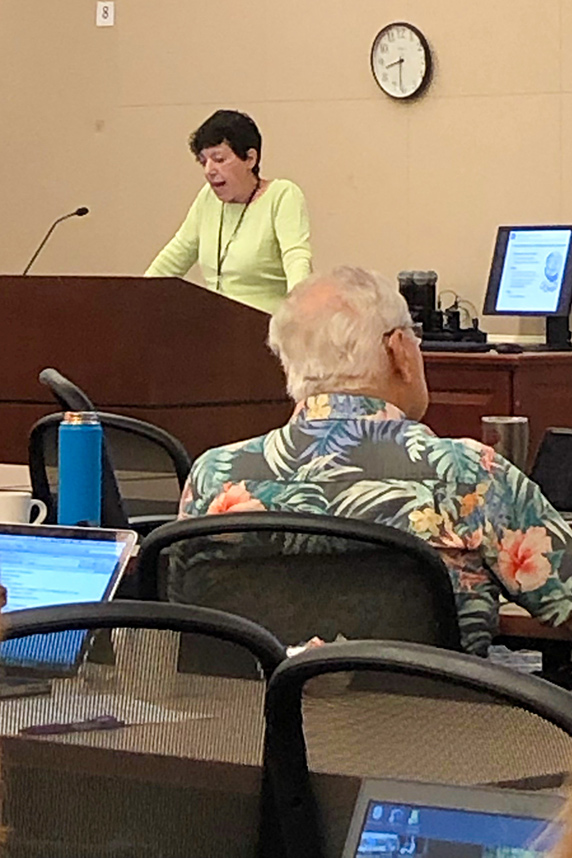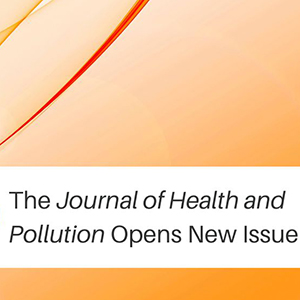Scientists who study developmental origins of health and disease (DOHaD) gathered September 9-10 in Chapel Hill, North Carolina, to share their latest research.
Their work shows how environmental factors affecting pregnancy, birth, and early childhood can increase disease risk later in life, including in one’s children and grandchildren.
The Fourth Annual Meeting of the U.S. DOHaD Society opened with a presentation by Linda Birnbaum, Ph.D., NIEHS and National Toxicology Program director. She said interest in this research grew significantly following pioneering work by David Barker, Ph.D., in the 1980s.
The Barker Hypothesis
He found that people born around the time of the Dutch Hunger Winter (1944-1945) experienced higher rates of coronary heart disease and obesity in adulthood.
 Birnbaum described how NIEHS-funded scientists help to advance DOHaD research. (Photo courtesy of Jesse Saffron)
Birnbaum described how NIEHS-funded scientists help to advance DOHaD research. (Photo courtesy of Jesse Saffron)“The Dutch people were being starved by the occupying Germans at that time. Children who were born during and after the famine were small for gestational age,” Birnbaum explained.
“[Barker] hypothesized that this early-life exposure had basically set up this situation between what occurred in utero and what happened to people later on in their lives,” she added.
That now-famous Barker Hypothesis inspired a new field — DOHaD. Researchers at the conference discussed studies of prenatal and early-life exposures beyond poor nutrition, such as those below.
- Arsenic.
- Bisphenol A.
- Dioxins.
- Ozone.
- Per- and polyfluoroalkyl substances.
- Pesticides.
- Phthalates.
Speakers cited studies showing associations between those substances and cancer, endometriosis, infertility, and autoimmune disease, among other health problems. But chemicals and pollution were not the sole focus at the meeting.
Trauma, poor sleep, and disease
For example, Chandra Jackson, Ph.D., an NIEHS epidemiologist, described links between traumatic childhood experiences in women and poor sleep later in life.
She said that most forms of poor sleep are more prevalent among black and Hispanic women who experience early-life trauma. She also noted that across all races, poor sleep is concerning because it is widespread and can lead to severe health problems.
“Both early-life trauma and poor sleep can lead to substance abuse but also an increased risk of conditions like obesity, hypertension, type 2 diabetes, certain cancers, and premature mortality,” said Jackson.
NIEHS-funded research was well-represented among the 33 speakers and 34 poster presentations at the meeting. Several grantees talked about their latest projects.
Innovative research methods
Megan Horton, Ph.D., an assistant professor in the Icahn School of Medicine at Mount Sinai in New York City, discussed her lab’s recent work related to manganese. “[It] is an interesting metal to explore because of its role both as an essential nutrient and as a neurotoxicant,” she said.
Horton’s team uses a novel tool to study how prenatal manganese exposure affects brain development in offspring.
Research has associated high manganese levels with impaired brain function in adolescence, but some scientists question whether a true causal relationship exists. Skeptics cite past studies’ lack of adequate biomarkers, she said, explaining that traditional biomarkers such as maternal blood and hair only show snapshots of exposure.
“That’s why, in our lab, we’ve moved to [baby teeth] to look at fetal exposure starting in the second trimester of pregnancy,” she said.
“They [the teeth] grow similar to tree rings. Anything that was circulating in the fetal blood stream is stored in them,” Horton noted.
Grantees in the National Institutes of Health Environmental influences on Child Health Outcomes (ECHO) program also discussed their research. Their work helps to show how environmental factors can affect child development.
ECHO researchers covered topics related to smoking while pregnant, autism spectrum disorder, and prenatal exposure to metals.
(Jesse Saffron, J.D., is a technical writer-editor in the NIEHS Office of Communications and Public Liaison.)










